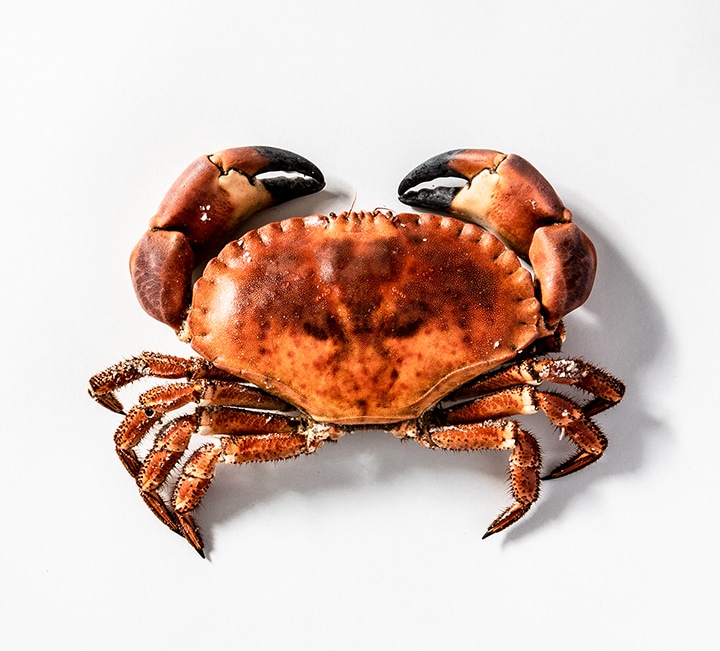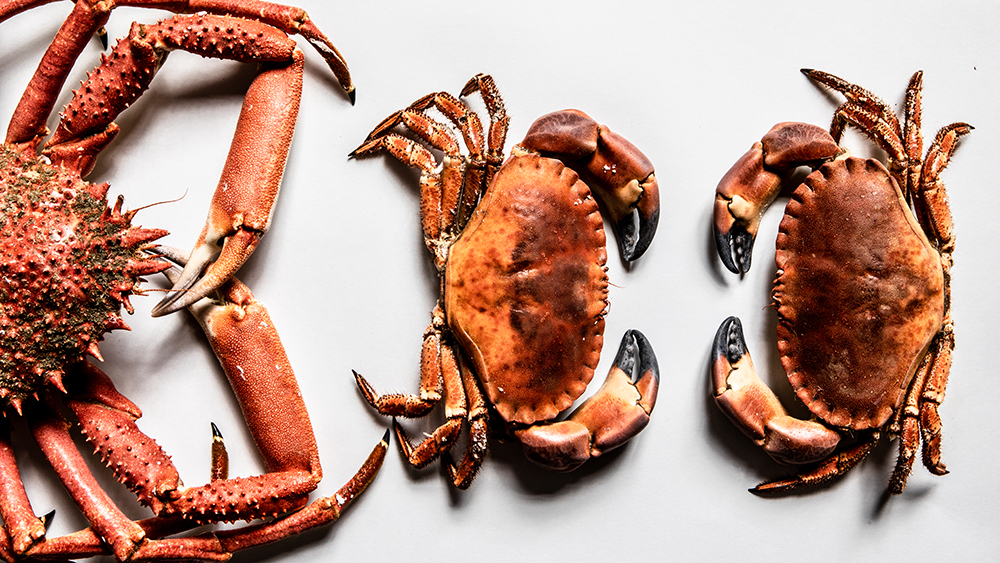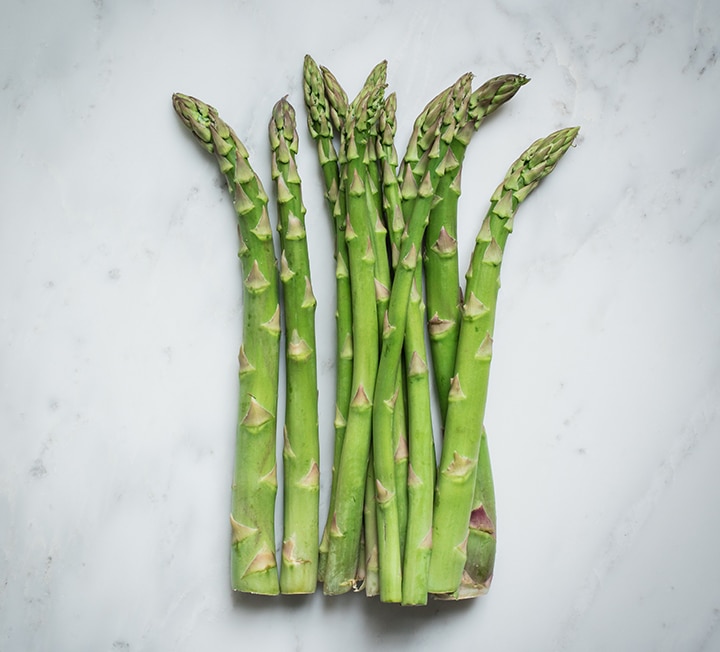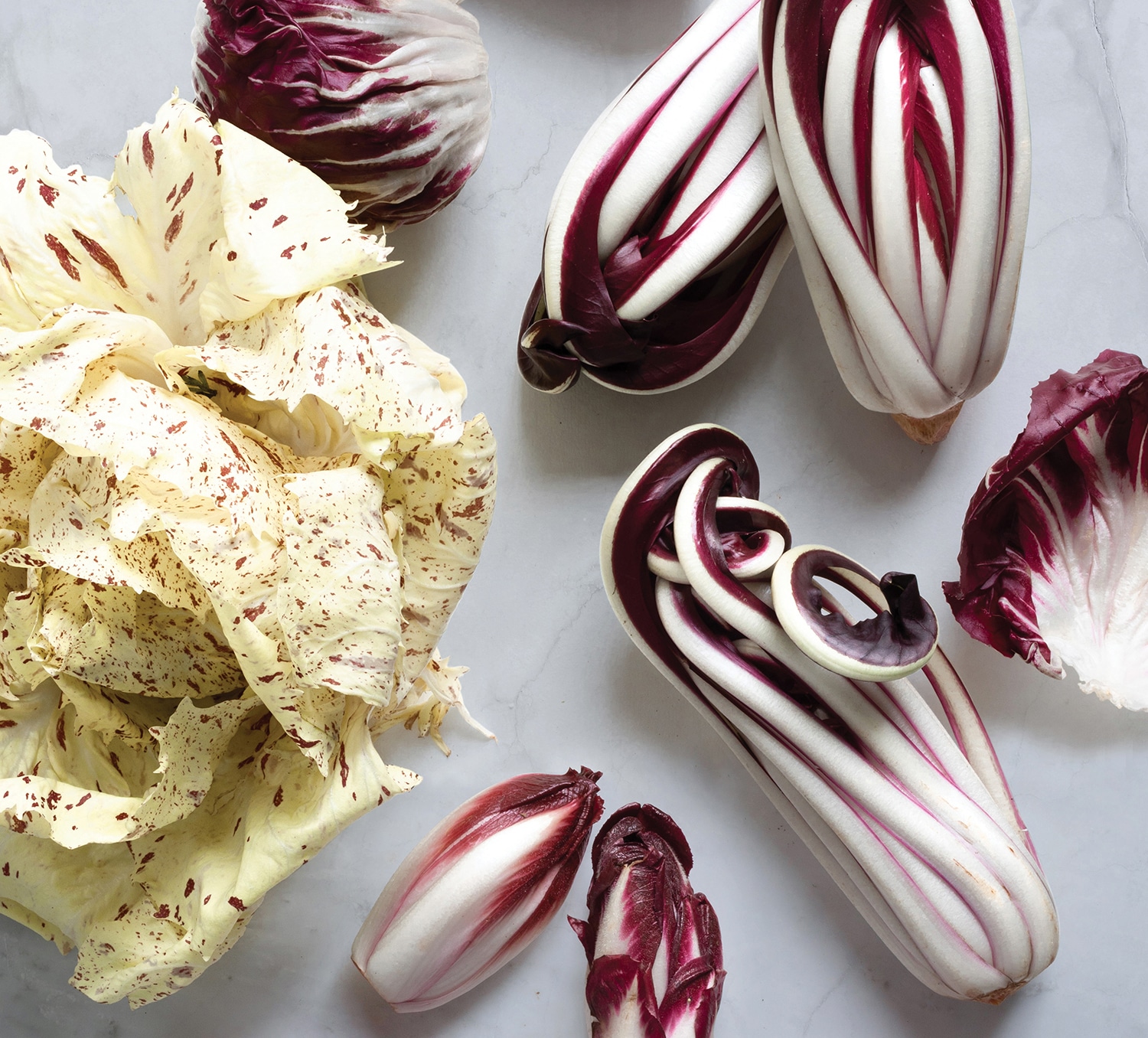Shell shock
Thom Eagle on why the bold flavours of native brown crab mean that, rather than being treated with the delicacy afforded to lobster, it can provide the basis for a more adventurous style of cooking


“GET YOURSELF A FEW BOTTLES OF RIESLING AND SOME WHOLE CRABS AND MAKE A DAY OF IT”
Images: Regula Ysewijn
I lived for many years in Norfolk, mainly in Norwich, and particularly there and in the north of the county, all the way from Yarmouth to the Cromer sands, nothing heralds the start of the culinary summer so much as the arrival on the menu and market stalls of crab. In a world where few things still seem to be local and seasonal, where the great herring fisheries have long since moved on and where even Colman’s mustard, until recently the pride of Norwich, has relocated its factories, the Cromer crab is still very much a going concern, available during the season in every cafe and restaurant east of the Wash. Although the people of Cromer are right to be proud of their local crustaceans, really they are good all over the country, if often compared unfavourably with the apparently more glamorous lobster.
In defence of the crab, Hugh Fearnley-Whittingstall has made the remark that while lobsters cost twice as much as crab, they are not twice as delicious – which is true. Even this misses the point, though, which is that crab is in fact a very different eating experience to lobster, and not really to be compared at all. Bisques and ravioli notwithstanding, the somewhat ephemeral taste of lobster is to my mind best enjoyed as-is, halved and in the shell, with only a flavoured butter of some sort (garlic, usually) to adorn its sweetness – the kind of meal best seasoned by the close proximity of seawater. Crab, it’s true, is often served like this as well. Order a crab salad at, say, Cookie’s Crab Shop on the north Norfolk coast and you will get not a mixed affair but rather a selection of salad items alongside a whole dressed crab – a crab that has been boiled, cracked open, picked over and packed back into the shell.
While nice once in a while, I think this is in general simply too much crab to eat. To me, the strong flavours of both the sweet white meat and the murkier brown really come into their own when combined with other things.

The white meat, from the legs and the fat claws, is essentially the muscle meat of the animal (insofar as a crab can be said to have such a thing), while the brown, composed of not-yet-formed shell and the various organs inside the main body, is crab offal by another name, and the same sort of hierarchy between the two exists as in the meat of any other animals. When I was cooking at Little Duck, lacking the time and the space to really get to grips with a crab, we would buy tubs of either white or brown meat, the former being more than three times as expensive.
As, again, with the cheaper cuts of meat, this distinction is a blessing for those who like deeper flavours; less sweet and delicate, the brinier brown meat is doubly economical, as a little goes quite a long way. Just a tablespoon or two, loosened with a splash of the cooking water, seasoned with some garlic and chilli just-tempered in oil and brightened with a squeeze of lemon juice, makes a wonderful sauce for thick spaghetti; or stir the same amount through a risotto with fresh peas for something that feels like a Venetian spring. The classic treatment, of course, is just to mix it through some mayonnaise and spread it on toast.
Even the less pungent white meat can be happily stretched further with a little thought. A good option is to pair it with something similar in texture, sweetness, or both. At The Sportsman in Kent, Stephen Harris serves white crab meat with hollandaise sauce and a little shredded carrot, the texture of which exactly matches the just-cooked crab. Eating this was the first time crab really made sense to me, its flavour distinct and exact.
At the restaurant, we used to make a sort of crab soup with sweetcorn and fideos, the little lengths of angel-hair pasta. With brown meat as well as the white stirred through, it was hard to tell what was pasta and what was crab, and the result was a very satisfying plateful. More recently I have cooked firm green courgettes with red spring onions and a little garlic in olive oil and their own juices, sweated together until bright and glossy, but with a good bite still to them, and then mixed the result with mint, white crab meat, and sliced lemons preserved under oil, sweet and green and sunny.
These, like the neatly dressed shells sold by the fishmonger, are all very convenient things to do with a crab, but sometimes convenience is not what you are after. Sometimes (not often enough), lunch is something that takes a very long time, and results in a great deal of mess. If you find that this is to be the case, then absolutely the best thing you can do is to get yourself a few bottles of riesling and some whole crabs – one of each between two should be enough, at lunchtime – and make a day of it. Any good fishmonger or market stall, including those at Borough, will be able to supply you with whole crabs. In some cases, if you are adventurous, you might get them live, from which state they will need, for kindness’s sake, to be swiftly despatched, and then to be just as swiftly cooked as once dead, crab does not like to hang around. I won’t, in any case, go into the details here – you can look up the process elsewhere, if you feel up to it. Whether you buy your crabs alive or cooked, however, you will need the same accompaniments. Crab-crackers and picks if you have them, a couple of hammers and a pack of skewers if you don’t; a bowl of mayonnaise, another of lemon halves, and your best friends. You can clean up tomorrow.


